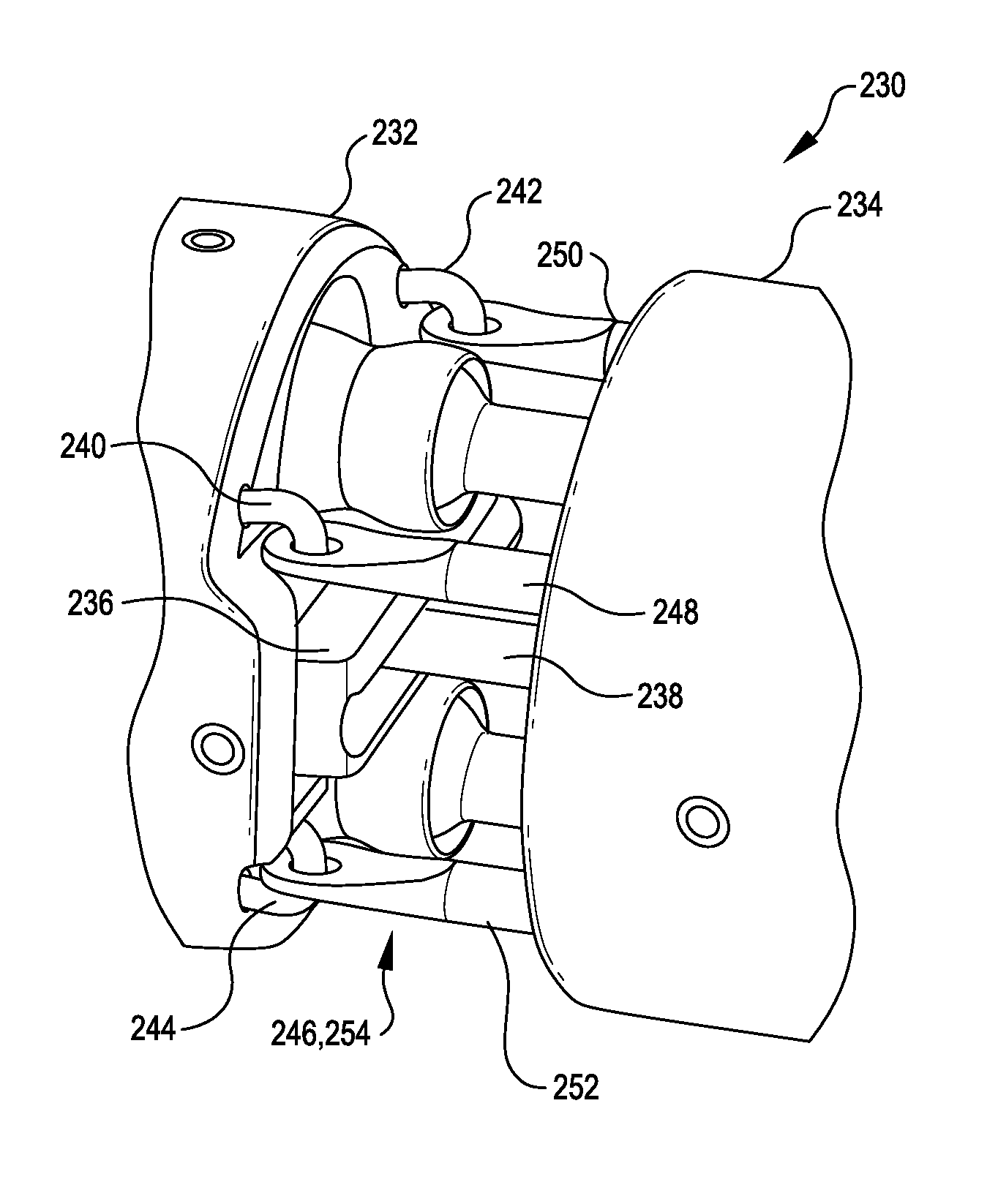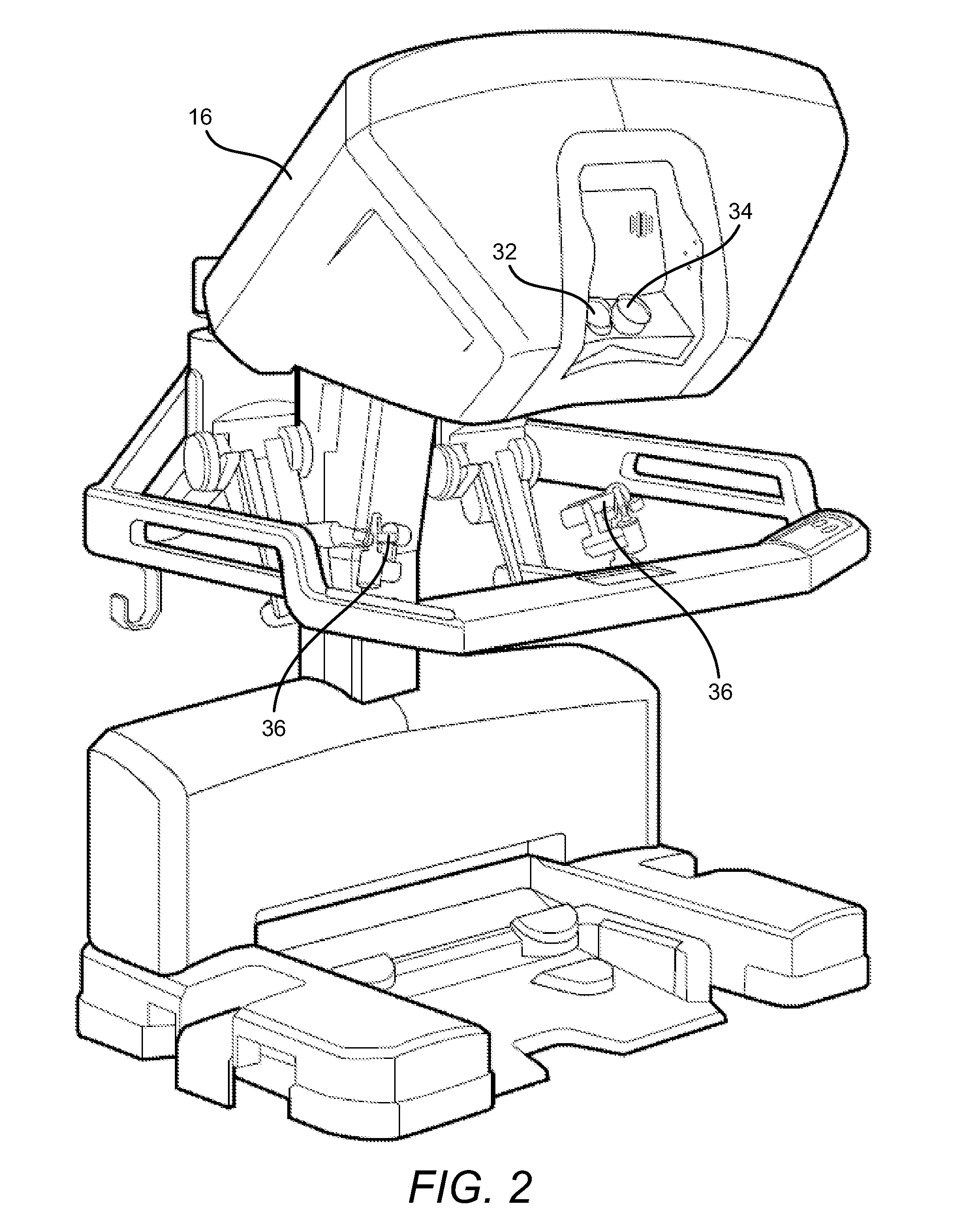Wrist articulation by linked tension members
a technology of tension member and wrist, which is applied in the field of wrist articulation, can solve the problems of reducing the effectiveness of surgical tools, alternative tools with shaft driven clamping mechanisms that fail to provide rotational movement of an end effector to mimic the natural action of a surgeon's wrist, etc., and achieves the effect of increasing maneuverability
- Summary
- Abstract
- Description
- Claims
- Application Information
AI Technical Summary
Benefits of technology
Problems solved by technology
Method used
Image
Examples
Embodiment Construction
[0095]In the following description, various embodiments of the present invention will be described. For purposes of explanation, specific configurations and details are set forth in order to provide a thorough understanding of the embodiments. However, it will also be apparent to one skilled in the art that the present invention may be practiced without the specific details. Furthermore, well-known features may be omitted or simplified in order not to obscure the embodiment being described.
[0096]Surgical tools with a two degree-of-freedom wrist mechanism, and related methods, are provided. In many embodiments, a two degree-of-freedom wrist includes an elongated intermediate wrist member that is pivotally coupled with both a distal end of an instrument shaft and an end effector body. The intermediate member can be pivotally coupled with the instrument shaft to rotate about a first axis that is transverse to an elongate direction of the instrument shaft. The end effector body can be p...
PUM
| Property | Measurement | Unit |
|---|---|---|
| distances | aaaaa | aaaaa |
| angle | aaaaa | aaaaa |
| outer diameter | aaaaa | aaaaa |
Abstract
Description
Claims
Application Information
 Login to View More
Login to View More - R&D
- Intellectual Property
- Life Sciences
- Materials
- Tech Scout
- Unparalleled Data Quality
- Higher Quality Content
- 60% Fewer Hallucinations
Browse by: Latest US Patents, China's latest patents, Technical Efficacy Thesaurus, Application Domain, Technology Topic, Popular Technical Reports.
© 2025 PatSnap. All rights reserved.Legal|Privacy policy|Modern Slavery Act Transparency Statement|Sitemap|About US| Contact US: help@patsnap.com



